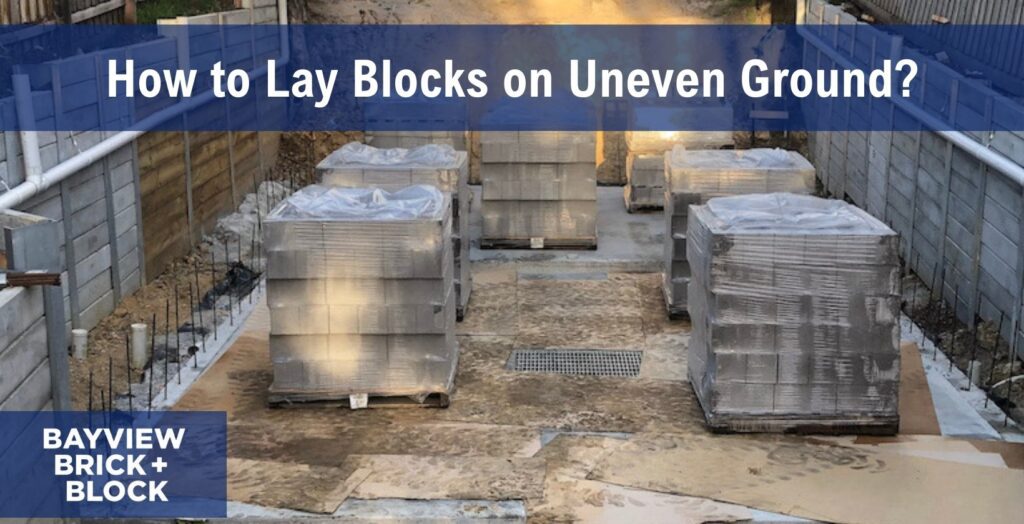You can lay blocks on uneven ground by establishing a solid, level base that compensates for slopes and irregularities. Blocklaying experts know that excavating high spots and backfilling low areas with compacted material creates a stable foundation. Using string lines and a laser level ensures each course aligns correctly, preventing structural issues.
This guide covers the challenges of working with sloped or uneven terrain, the steps needed to create a level base, and the challenges of working with sloped terrain.
Steps to Create a Level Base Before Laying Blocks
A stable foundation prevents movement and ensures walls stay straight. Sloping or uneven ground requires careful preparation to avoid long-term structural issues. Follow these five steps to establish a solid base before laying blocks.
Step 1: Mark Out the Area
Set string lines to define boundaries and check for level differences. Use pegs and a spirit level to establish the correct height across the site. Accurate marking prevents errors when excavating and filling.
Step 2: Excavate High Points and Fill Low Areas
Remove excess soil from raised sections to create an even surface. Fill depressions with compactable material like road base or crushed rock. Packing down each layer properly stops future settling.
Step 3: Compact the Base Material
Use a plate compactor or hand tamper to press down the fill. A firm, even surface supports blockwork and prevents shifting over time. Compacting in stages improves stability and load-bearing capacity.
Step 4: Check Levels and Adjust
Run a straightedge or laser level across the prepared ground. Fill low spots or shave off high areas to achieve a consistent height. Accurate levelling ensures blocks sit evenly without constant adjustments.
Step 5: Lay a Solid First Course
Position blocks on a mortar bed or footing to set a true starting line. Tap each one into place with a rubber mallet and confirm alignment. Using mortar for blocklaying correctly ensures a strong bond, preventing gaps and movement in the structure.
Challenges of Working with Sloped or Uneven Terrain
The following are the challenges of working with sloped or uneven terrain:
Levelling the Foundation
Uneven terrain makes it hard to create a stable base for blockwork. High points must be cut down, while low sections need filling with compacted material. If the ground isn’t prepared correctly, settlement occurs, leading to movement in the structure. Proper excavation and grading prevent future issues.
Compaction plays a key role in stability. Loose soil shifts under weight, causing cracks or misalignment. A solid sub-base, such as crushed rock, provides a firm surface. Checking levels throughout the process ensures a straight, even starting course, which keeps walls plumb as construction progresses.
Risk of Wall Instability
Blocks require a firm, level base to distribute weight evenly. Sloping ground puts uneven pressure on sections of a structure, increasing the chance of cracking or leaning. Poor stability weakens walls over time, leading to costly repairs.
Reinforcement techniques reduce movement on difficult sites. Stepped footings or concrete piers create a secure foundation, preventing shifting. Using bond beams at key points adds further strength. Without these measures, the finished work may not hold up to environmental pressures.
Drainage and Erosion Issues
Water runoff from sloped ground washes away loose material, weakening support beneath a wall. Poor drainage leads to pooling around footings, causing subsidence over time. Excess moisture softens compacted fill, making it unreliable for supporting heavy loads.
Installing proper drainage solutions minimises erosion. Agg drains or weep holes direct water away from critical areas, maintaining stability. Compacting fill in layers and using the right aggregate also reduces movement. A well-prepared site ensures blocks remain secure in varying conditions.

